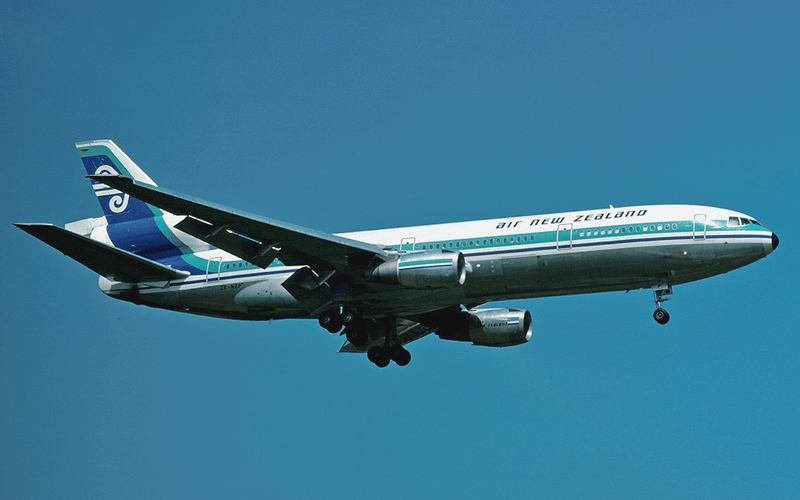Forty years ago, Air New Zealand chartered flight 901 to Antarctica that was supposed to show its passengers the beauties of the southernmost continent. Unfortunately, the DC-10 crashed into the side of Mount Erebus and kill the 257 people on board, making the flight the deadliest incident in the history of New Zealand. On November 28, 2019, New Zealand Prime Minister Jacinda Ardern apologized for the government’s handling of the situation at the time.
The Air New Zealand McDonnell Douglas DC-10-30, registered ZK-NZP, took off from Auckland to carry out a 12-hour sightseeing tour around some of Antarctica’s wonders such as Ross Island and Mount Erebus, Ninnis Glacier. Onboard the aircraft were 237 passengers and 20 crew members. Approximately five hours into the flight, the plane crashed into the icy side of Mount Erebus, a 3,794-meter (12,448 feet) volcano.
New Zealand’s Office of Air Accidents Investigation initially determined that the crash was due to an obsolete flight plan, dating over a year back, as well as poor visibility due to weather conditions, also known as a whiteout, that makes snowy terrain impossible to distinguish from the clouds. The report of May 31, 1980, concludes: “The probable cause of this accident was the decision of the captain to continue the flight at low level toward an area of poor surface and horizon definition when the crew was not certain of their position and the subsequent inability to detect the rising terrain which intercepted the aircraft’s flight path.”
However, public pressure forced the government to request a second independent review from a Royal Commission of Inquiry, to be carried out by Peter Mahon, a judge of the High Court of New Zealand. The second conclusion was drastically different. Indeed, Mahon concluded in his report released on April 27, 1981, that “the single dominant and effective cause of the disaster” was the erroneous flight path above the volcano, which was programmed into the aircraft’s navigation system without advising the flight crew. Even more alarmingly, Mahon denounced “an orchestrated litany of lies” regarding the primary investigation that blamed the pilots. Those words would be criticized by both the state-owned airline and the government, and would eventually cost him his career.
On the fortieth anniversary of the tragedy, Prime Minister Jacinda Ardern made a public apology on behalf of the government. “The pilots were not responsible for this tragedy, and I stand here today to state that again,” said Ardern. Air New Zealand, which had already made amende honorable ten years ago, renewed its apology. “I apologize on behalf of an airline which 40 years ago failed in its duty of care to its passengers and staff,” Air New Zealand Chairman Therese Walsh said in a statement. “And I apologize again on behalf of the airline for the way in which the families of those lost on Mt Erebus were treated in the aftermath of the incident. Better care should have been taken of you.”

